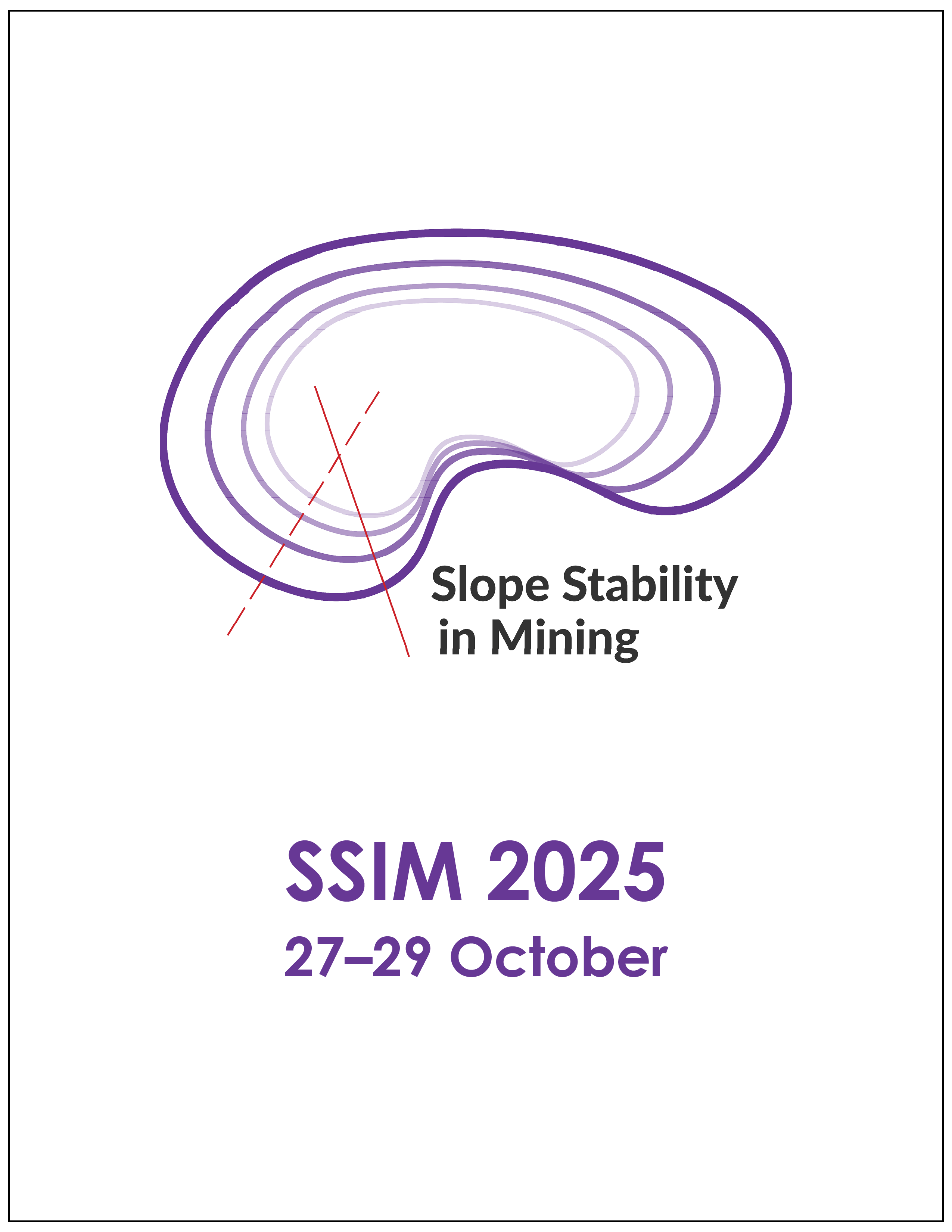Advantages of geotechnical data collection during pit wall construction for open pit slope design optimisation

|
Authors: Darakjian, T; McIlquham, J; Weller, M; Morrell, C; Tennant, D |
DOI https://doi.org/10.36487/ACG_repo/2535_18
Cite As:
Darakjian, T, McIlquham, J, Weller, M, Morrell, C & Tennant, D 2025, 'Advantages of geotechnical data collection during pit wall construction for open pit slope design optimisation', in JJ Potter & J Wesseloo (eds), SSIM 2025: Fourth International Slope Stability in Mining Conference, Australian Centre for Geomechanics, Perth, https://doi.org/10.36487/ACG_repo/2535_18
Abstract:
Pit slope design is often considered final at the detailed design for life of mine pit walls. During construction of these walls, critical information from newly exposed benches can be overlooked, particularly if a slope reconciliation plan has not been produced. The absence of slope reconciliation may lead to unexpected slope instability, which could result in not achieving design acceptance criteria values, increased effort being required to maintain bench width for management of rockfall risk, mitigation measures to manage loss of benches, step-outs to manage multi-bench and inter-ramp instabilities, or complete loss of a pit wall. The purpose of geotechnical rock mass and structural models generated for slope stability analysis is to predict the conditions at the time of construction. As these models are only as good as the data provided, they often include gaps in knowledge where little or no data is available. This is particularly challenging in areas of variable rock mass and structural conditions. This paper documents the approach used to consider the high degree of spatial variability in geotechnical properties during construction of the Lihir Mine, located in Papua New Guinea. Lihir Mine is geotechnically characterised through geostatistical block modelling approaches to better identify the spatial variability of geotechnical properties within geotechnical domains. The use of block modelling tools has allowed for greater resolution of predicted input parameters for slope stability analyses. During construction, variation of predicted versus as-built geotechnical conditions are observed and documented as part of the slope reconciliation study. Onsite geologists and engineers collect key information from exposed faces through geological mapping, rock core logging, observations during construction and monitoring data review, where these data are compared to predicted conditions. The magnitude of variation is then assessed to determine its potential impact on slope stability and areas where additional slope stability analyses may be required.
Keywords: stability analysis, geotechnical characterisation, slope optimisation, slope stability, geotechnical model
References:
Bieniawski, ZT 1976, ‘Rock mass classification in rock engineering’, Exploration for Rock Engineering, vol. 1, pp. 97–106.
Bieniawski, ZT 1989, Engineering Rock Mass Classifications, Wiley, New York.
Brencich, A, Cassini, G, Pera, D & Riotto, G 2013, ‘Calibration and reliability of the rebound (Schmidt) hammer test’, Civil Engineering and Architecture, vol. 1, no. 3, pp. 66–78.
Brown, ET (ed.) 1981, Rock Characterization Testing and Monitoring. ISRM Suggested Methods, Pergamon Press, Oxford.
Carman, GD 1994, Genesis of the Ladolam Gold Deposit, Lihir Island, Papua New Guinea, PhD thesis, Monash University, Melbourne.
Darakjian, T, Luck, S, Luck, D, Xu, C, Moffitt, K, Nicoll, S, Tennant, D & Pothitos, F 2023, ‘Challenges of characterising a highly altered and variable rock mass for open pit slope design optimisation’, in PM Dight (ed.), SSIM 2023: Third International Slope Stability in Mining Conference, Australian Centre for Geomechanics, Perth, pp. 359-372 ,
Davies, RH & Ballantyne, GH 1987, ‘Geology of the Ladolam gold deposit Lihir Island, Papua New Guinea’, Proceedings of the Pacific Rim Congress 87, Australasian Institute of Mining and Metallurgy, Melbourne, pp. 943–949.
Government of Alberta 2018, Alberta Dam and Canal Safety Directive, Edmonton.
Hoek, E, Carter, TG & Diederichs, MS 2013, ‘Quantification of the Geological Strength Index’, in 47th U.S. Rock Mechanics/Geomechanics Symposium, American Rock Mechanics Association, San Francisco.
ITASCA 2024, FLAC3D, computer software.
Maptek 2022, Vulcan, computer software, Denver.
Marinos, P & Hoek, E 2000, ‘GSI: a geological friendly tool for rock mass strength estimation’, GeoEng 2000: International Conference on Geotechnical and Geological Engineering, Technomic Publishing Co, Lancaster, pp. 1422–1446.
Moyle, AJ, Doyle, BJ, Hoogvliet, H & Ware, AR 1990, ‘The geology and mineralisation of the Ladolam gold deposit, Lihir Island, Papua New Guinea’, Australasian Institute of Mining and Metallurgy, vol. 14, pp. 1793–1805.
RocScience 2023a, RocPlane, computer software, Toronto.
RocScience 2023b, SWedge, computer software, Toronto.
RocScience 2025, Slide2, computer software, Toronto.
Seequent 2024, Leapfrog Works, computer software, Christchurch.
Stoch, B, Darakjian, T, Zorzi, L, Luck, S, Luck, D, Moffitt, K, Nicoll, S, Tennant, D & Pothitos, F 2023, ‘Development of a fully constrained structural model in a volcano caldera and its influence on open pit slope design’, in PM Dight (ed.), SSIM 2023: Third International Slope Stability in Mining Conference, Australian Centre for Geomechanics, Perth, pp. 467–476,
© Copyright 2025, Australian Centre for Geomechanics (ACG), The University of Western Australia. All rights reserved.
View copyright/legal information
Please direct any queries or error reports to repository-acg@uwa.edu.au
View copyright/legal information
Please direct any queries or error reports to repository-acg@uwa.edu.au

